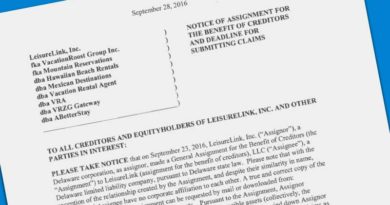A Reserve Fund Success Story
I’d like to share a story about a timeshare client of Association Reserves that is typical in so many ways. Situated near a scenic alpine lake, this 70 unit resort consists of two and three bedroom villas. The buildings are all three stories tall with one elevator apiece. The owners enjoy all the usual amenities; pool, spa, and recreation room. But the primary draw of the resort is its fresh mountain air and proximity to the lake, town, biking trails, and ski slopes.
But beyond its desirable location, what makes this client remarkable in our eyes is the wise reserve budget decisions the Board and management has made through the years. They truly care about the resort’s future, and it’s been our pleasure to guide them toward financial success and physical sustainability. This team effort over a 15 year period has made the difference between the facility becoming old and outdated, and its reputation as a vibrant and well-maintained vacation destination. Let me tell you how this came to be.
Our first Reserve Study engagement for this client was in 2001. I was the initial Project Manager, and I can still remember the strong scent of pine, the crisp spring air, and the crunching sounds underfoot as I walked over a few scattered patches of snow while measuring and inspecting the building exteriors. The property was constructed in 1999, so the resort was only two years old at the time. With few exceptions, the common area assets were in good condition. But in finalizing the report, we discovered that their reserve contributions had been woefully inadequate, resulting in a very small Reserve Fund.
Reserve fund strength is measured by a ratio called “Percent Funded”, which compares the reserve fund balance to the monetized value of deterioration. As a relatively new resort with its assets in good condition, only a small amount of deterioration had taken place. But the amount that had been set aside in reserves was significantly less. At 33% funded, the adequacy of reserves was on the cusp of “poor”. The evidence was clear – reserve contributions weren’t keeping up with deterioration that was both inevitable and predictable. If the Board kept doing what they were doing, there wouldn’t be enough reserves to maintain the physical assets without delays or special assessments.
Deferred maintenance, special assessments, or loans are common among association-governed communities that are 0-30% funded, while such “cash flow” problems are rare among associations above 70% funded. It was time to get the Association on track and collect appropriately sized reserve contributions. So our very clear and direct recommendation to the Board that first year was to double the size of reserve contributions, from $51 per owner per year to $98 per owner per year. Without such a drastic move, our report showed that there wouldn’t be enough funds for the Association to afford the first interior renovation project projected in five years.
As in any competition, a “bad start” puts an athlete at a disadvantage, but what is most important is how they handle the rest of the race. We were pleased to learn that the Board and management accepted our findings and raised the assessments so that reserve contributions could be made at the level we recommended. They were back in the race!
Our initial 2001 recommendation and 30-year funding plan has stood the test of time. We return to the property for regular “with-site-visit” Reserve Study updates every two or three years. As we had projected, the necessary reserve contributions have gradually crept up with inflation. In the 2015 Reserve Study, the funding plan called for contributions of $121 per owner per year. This represents about a 2% per year increase since 2001.
Since our first analysis, the resort’s reserves have strengthened. Although some projects occurred sooner than expected or were more expensive than anticipated, the Association always found there was enough in reserves to handle the expenses without a delay or special assessment. Those unexpected circumstances have slowed down the progress of strengthening the reserve fund, but the Association continues to make steady headway toward the goal of being 100% funded.
So, what type of projects have been accomplished at the property? To ensure a fresh and relevant appearance, the interiors have been remodeled twice, based on a 7-year cycle. To maximize curb appeal, the asphalt parking lot has been resurfaced. The resort’s reserve fund is on pace to handle two big future expenditures: a roof replacement in 2020 and elevator modernizations in 2024. And they will have achieved all this without deferring projects, levying special assessments, or taking out a loan.
I credit the courageous initial move to raise annual assessments $47 per owner way back in 2001 as putting the resort on course to thrive financially. That increase, where the Board faced reality by acknowledging the true and ongoing cost of deterioration, has been long forgotten by the owners. Since that time, it has only been necessary for the Board to occasionally “tweak” the reserve contribution rate.
Many resorts talk about “sustainability” and proudly point to the recycling program they’ve launched, or the pool’s solar hot water system. But this Board has addressed true physical sustainability. Their regular contributions to reserves are offsetting common area deterioration that is inevitable and predictable. They are making repairs, replacements and refurbishments in a timely manner to protect, maintain, and enhance the physical assets of their resort. The pool and spa are clean and attractive, unit interiors are beautiful and inviting, and the common areas are well-maintained. Owners of this timeshare find it to be a welcome respite from everyday life, providing a relaxed and untroubled stay in a refreshing, beautiful, and memorable place. And wasn’t that the motivation for purchasing the timeshare in the first place?



